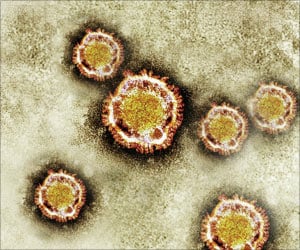Adult sinusitis has a profound impact on quality of life and workforce productivity, while costing the nation’s healthcare system over $5.8 billion annually.
The American Academy of Otolaryngology-Head and Neck Surgery (AAO-HNS) has issued multi-disciplinary, evidence-based practice guidelines for treating adult sinusitis. Adult sinusitis has a profound impact on quality of life and workforce productivity, while costing the nation’s healthcare system over $5.8 billion annually.
The new practice guidelines outline the best way for physicians and other healthcare professionals to diagnose and manage sinusitis in adults.'Sinusitis is responsible for more than one in five antibiotics prescribed in adults and 500,000 annual surgical procedures,' notes Richard Rosenfeld, MD, lead author of the guideline and chair of the guideline panel. 'If we are to address the issue of over-prescribing antibiotics, it starts with setting guidelines for when it is proper to use antibiotics to treat patients’ most common ailments.'
The guidelines were developed with input from a wide array of medical specialties, including representatives from the fields of allergy, emergency medicine, family medicine, health insurance, immunology, infectious disease, internal medicine, medical informatics, nursing, otolaryngology – head and neck surgery, and radiology.
'It was critical to develop a set of guidelines that is not only based on sound science, but also to hear from those in the many specialties that have a stake in treating sinusitis in adults,' Rosenfeld said.
The guidelines emphasize appropriate diagnosis, and provide management options including observation, antibiotic therapy, and additional testing, including:
· Healthcare professionals should distinguish acute bacterial sinusitis from sinusitis caused by colds, viruses, and non-infectious conditions. Bacterial sinusitis is likely when the illness (a) is still present after 10 days or (b) worsens within 10 days after initial improvement (double worsening pattern).
· Acute sinusitis is diagnosed as up to four weeks of purulent (not clear) nasal drainage accompanied by nasal obstruction, facial pain-pressure-fullness, or both.
· X-rays are not recommended to diagnose acute sinusitis in most patients.
· Observation without antibiotics is a safe and effective management option for selected adults with acute sinusitis who have mild illness (mild pain and temperature <101oF) and assurance of follow-up.
· When antibiotics are prescribed, amoxicillin is recommended as first-line therapy.
· Acute sinusitis may take up to seven days to improve, regardless of whether the initial therapy consists of observation or immediate antibiotics.
· Healthcare professionals should distinguish chronic sinusitis (lasting 12 weeks or longer) and recurrent acute sinusitis (four episodes per year without symptoms in between) from isolated episodes.
· Patients with chronic sinusitis or recurrent acute sinusitis should have computed tomography (CAT scan) of the sinuses; additionally, nasal endoscopy, allergy assessment, or both may also be obtained.
· Clinicians should educate/counsel patient with chronic sinusitis or recurrent acute sinusitis regarding control measures, which include smoking cessation and saline nasal irrigation.
Advertisement
Source-Newswise
SRM/J






